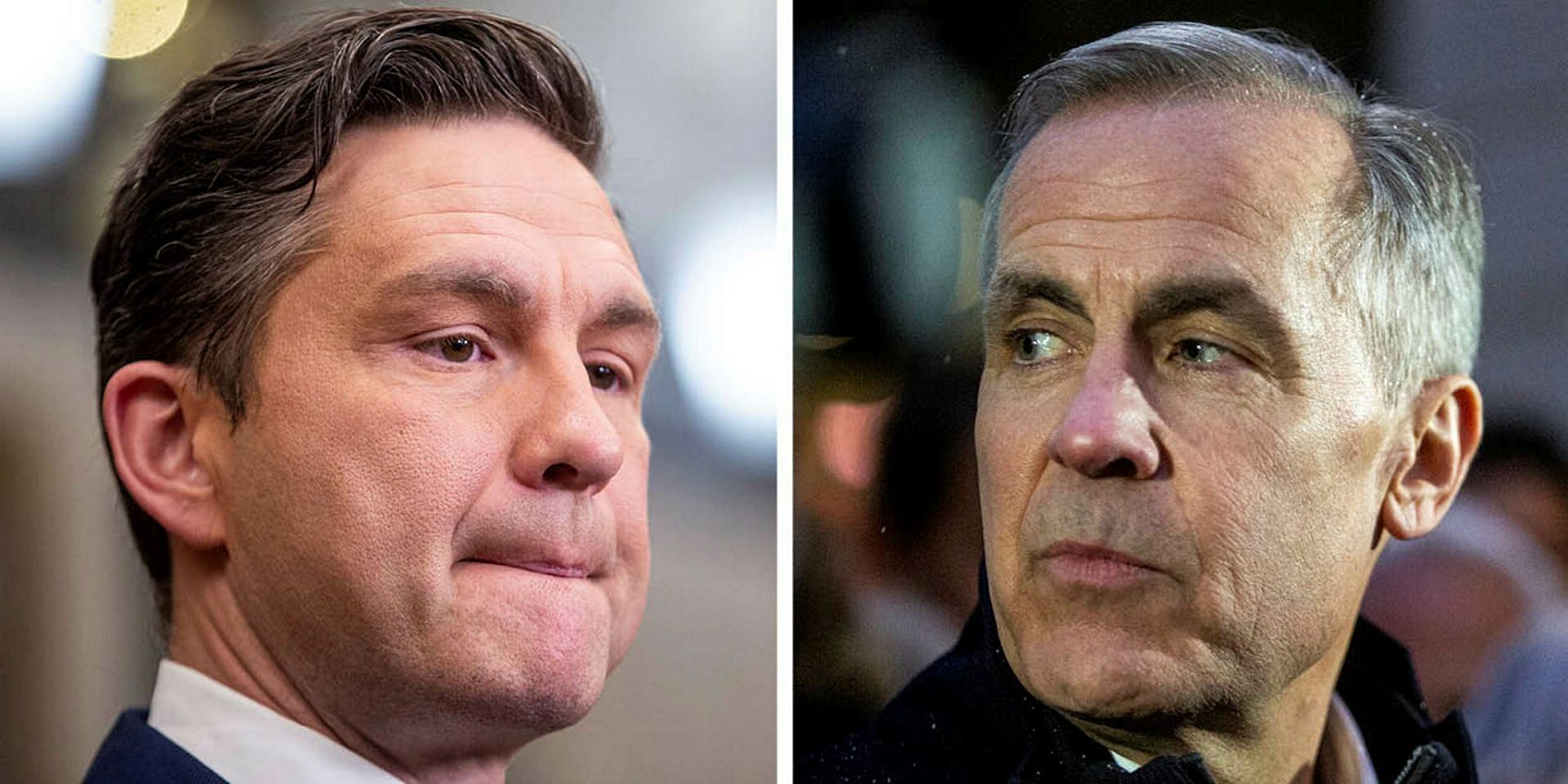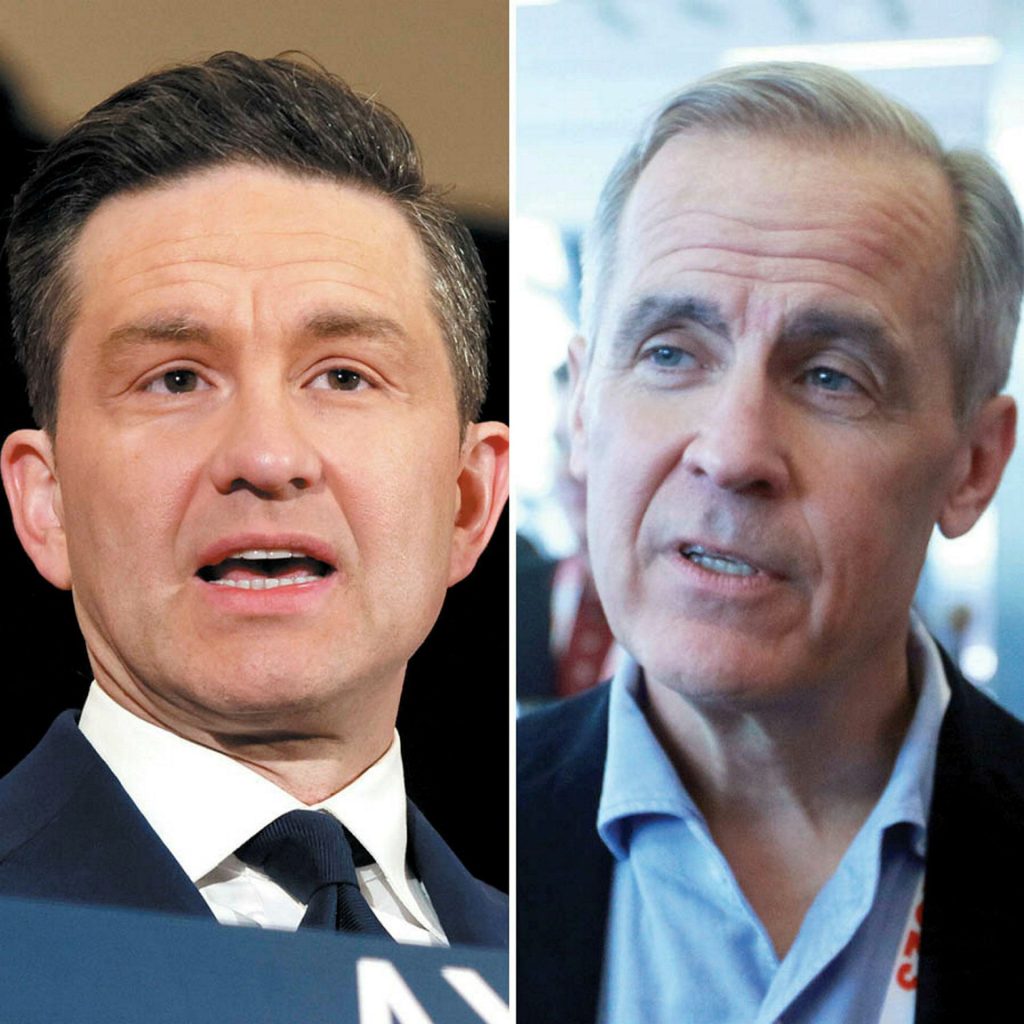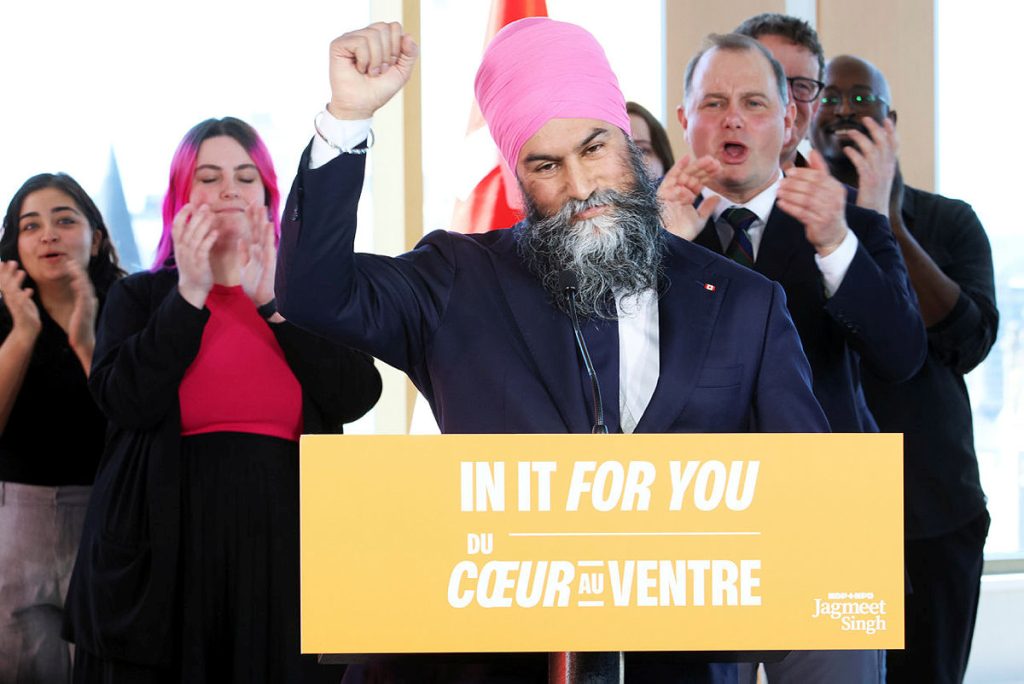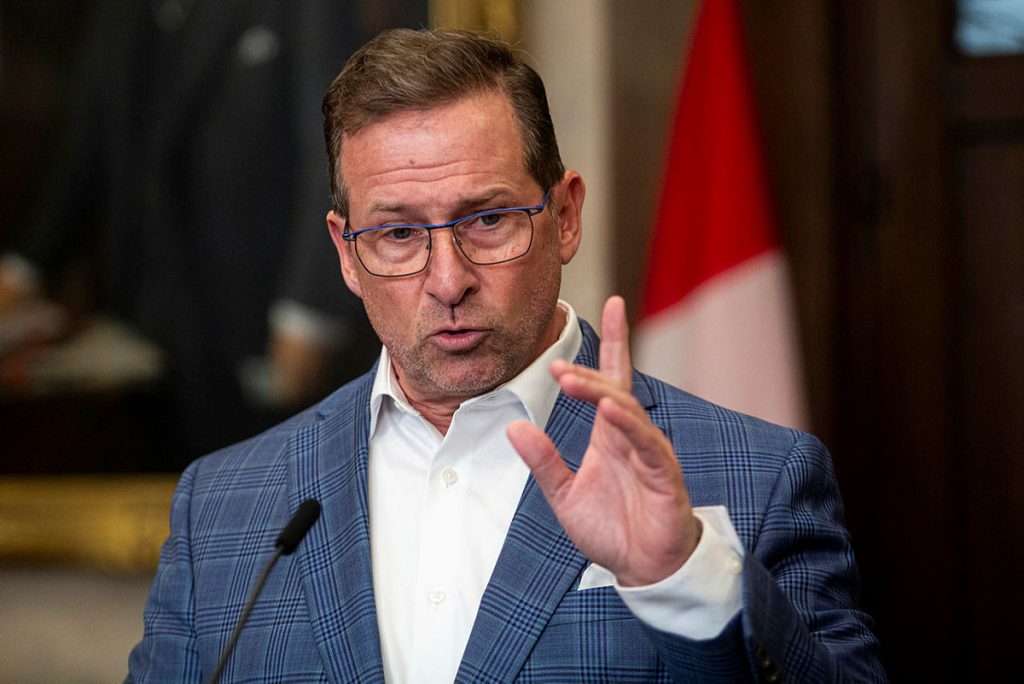Poilievre needs to ‘bomb the bridge’ of Carney’s credibility to win one of Canada’s ‘most consequential’ elections, say political players

As one of the “most consequential” election campaigns enters its third week, the Liberals are leading in the polls, and if the Conservatives hope to win, they will need to seriously undermine Mark Carney’s credibility—much like Brian Mulroney’s Tories did to John Turner’s Liberals in the 1988 campaign.
“Remember, in 1988, the Tories said that they had to bomb the bridge on John Turner,” said Greg Lyle, president of Innovative Research, in an interview with The Hill Times. “Well, the job of the Tories in 2025 is to bomb the bridge of Carney’s credibility.”
Defining one’s opponent in a negative light is a common strategy across all political parties. Mulroney did it to Turner; and the Jean Chrétien Liberals employed the same tactic against leaders of the Reform and Alliance parties. Liberal prime minister Paul Martin did so against Stephen Harper’s Conservatives, who then went onto politically dismantle the red team under Stéphane Dion and then Michael Ignatieff. Although the Conservatives attempted to do the same to Justin Trudeau in 2015, it didn’t work.
When Pierre Poilievre became Conservative leader in 2022, many expected the Liberals to launch attack ads against him. But, the Liberals lacked adequate financial resources to do so. In contrast, the Conservatives spent millions of dollars shaping a favourable public image of Poilievre. For more than 18 months, the party maintained a double-digit lead.

That trend shifted after Trudeau announced his exit plans in early January. As the governing party, the Liberals received a further boost from the United States President Donald Trump’s tariffs on Canada, positioning the party advantageously in the emerging trade conflict with the U.S.
Even before Carney officially secured the Liberal leadership on March 9, the Conservatives had already begun airing attack ads against him. However, those efforts have not produced the results they’d hoped for—at least, not as of last week.
Lyle said that there are currently two key ballot questions: who is best positioned to negotiate with Trump, and whether it’s time for a change in government. If the Conservatives want to win the next election, they need to convince Canadians that the second question—time for change—is the one that matters most.
He explained that the Liberals currently lead all parties because they are the preferred option for left-of-centre voters. At the same time, the Liberals are attempting to attract fiscally conservative—or “blue”—Liberal voters. However, they must tread carefully: if they shift too far to the right, they risk alienating their progressive base.
Lyle said that Carney’s tone is resonating more with business-oriented Liberals and moderate Conservatives, compared to Poilievre’s more aggressive style.
He also mentioned the importance of the Bloc Québécois vote. While the Bloc remains a significant force in Quebec, it’s clear they will never form government, which is dampening enthusiasm among some Bloc supporters. As the race tightens, whichever party—Liberal or Conservative—appears to be within reach of forming a majority will likely appeal to Bloc-leaning voters by asking them: “do you want to be on the inside or the outside?”

Lyle also said that while Poilievre has been in public life for nearly two decades, Carney is still relatively new to the political scene, and many Canadians don’t yet know much about him. This gives the Conservatives an opening to try to hold Carney to account based on his past record in both the public and private sectors.
Lyle said that while he hasn’t specifically tested the Conservative ads, he said the ones he’s seen come across as “mean-spirited,” which tends to turn people off. He suggested that the Conservatives should avoid using ominous imagery and music, and instead create ads that are attention-grabbing without being off-putting.
“Every day that goes along without someone really hitting them with something that hurts is good news for [Carney],” Lyle said. “He’s another day closer to the finish line, but still, people will end up in this campaign still with a lot of uncertainty about him.”
On the other hand, Lyle said, the Bloc and the NDP are going to make an argument that neither Carney nor Poilievre are the right people to address issues like the gap between the rich and the poor. They can say both leaders are on the side of big business.
Lyle said that one argument Poilievre can make to Canadians is to link the desire for change with the challenge of dealing with Trump. He suggested Poilievre could frame it by saying that the best way to confront Trump is through rebuilding Canada’s economy and diversifying our international trade—whereas Carney, who advised Trudeau, represents the opposite approach.
Most polling firms are currently reporting momentum on the Liberal side. On the low end, Abacus Data shows a statistical tie, with the Liberals and Conservatives both at 39 per cent, and the NDP at 11 per cent. On the high end, EKOS Research reports a 12-point Liberal lead, placing the Liberals at 48 per cent, Conservatives at 36 per cent, and the NDP at six per cent, as of March 31.
According to the polling aggregator 338Canada, if an election were held today, the Liberals would receive 43 per cent of the vote, followed by the Conservatives at 38 per cent, the NDP at eight per cent, the Bloc at six per cent, and the Greens at three per cent. The margin of error is plus or minus five percentage points for the Liberals, plus or minus four per cent for the Conservatives, plus or minus two percent for the NDP, and plus or minus one per cent for both the Bloc and the Greens.
Based on these figures, 338 Canada projects that the Liberals would win 191 seats, the Conservatives 126, the Bloc 18, the NDP seven, and the Greens one. The range of possible outcomes shows the Liberals winning between 164 and 220 seats, while the Conservatives could secure between 101 and 150. For the Bloc, the range is nine to 27 seats; for the NDP, one to 13 seats; and for the Greens, zero to two seats.

Frank Graves, CEO of Ekos Research, said this election campaign is both unique and highly consequential, as the next prime minister will play a critical role in shaping the country’s future—particularly in redefining Canada’s relationship with its largest trading partner, the U.S., and in forging new trade alliances with other Western nations.
According to his polling, there is a “visceral sort of concern” emerging among voters. This worry stems from several key issues: Trump’s trade war and confrontational stance toward Canada, his unilateral moves such as proposing to give parts of Ukraine back to Russia without consulting Ukraine, and his vision of transforming Gaza into a resort.
He added that many Canadians believe Trump’s actions will have long-term effects on the U.S. and its global influence, even after he leaves office.
Remarkably, Graves said that as recently as early January, the Liberals were trailing the Conservatives by 25 points. Now, they are leading by 14 points—a dramatic 39-point swing in just two months.
“That has produced a belief that we are undergoing a rupture with the United States, which most Canadians in my polling say is not going to heal itself or return just on the exit of Donald Trump, whenever that might be,” said Graves.
“He’s [Trump] now talking about a third term. So the clear majority [of Canadians], say ‘no, I don’t think it’s going back to normal. These are permanent changes,’ and [the Trump factor] has affected how we see our place in the world, how we see our own country, in ways that have produced an election which is clearly at a level of stakes that we haven’t seen in perhaps our lifetime. I can’t think of another one.”
According to a recent Ekos Research poll conducted between March 28 and April 2 suggested 75 per cent of Canadians believe the current election is the most important in the past 50 years. Graves explained that he selected a 50-year timeframe because it roughly reflects the voting lifetime of most Canadians, who typically begin voting at age 18. Prior to 1970, the voting age in Canada was 21.
The same poll also explored the emotional outlook of voters: 52 per cent reported feeling hopeful about the election, while 18 per cent felt discouraged, another 18 per cent felt fearful, and seven per cent expressed anger.
arana@hilltimes.com
The Hill Times






 LICENSING
LICENSING PODCAST
PODCAST ALERTS
ALERTS













